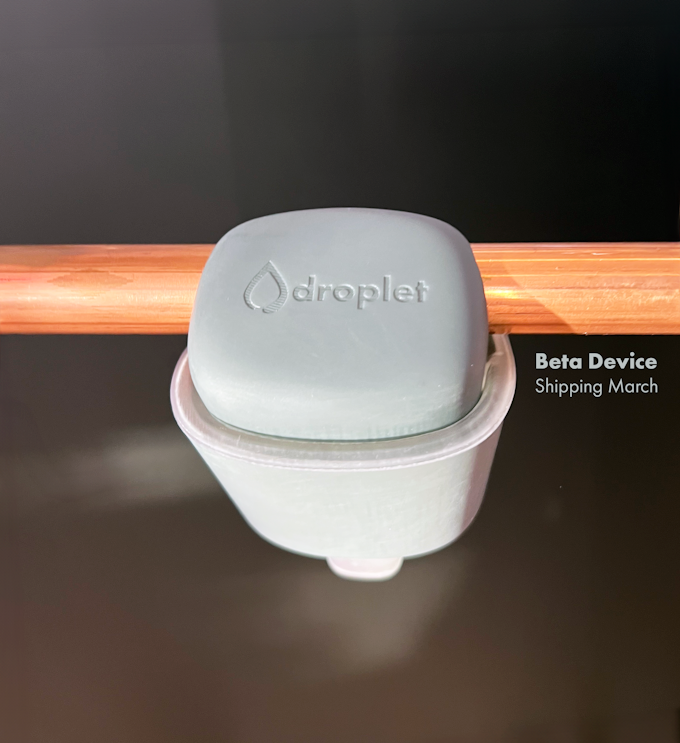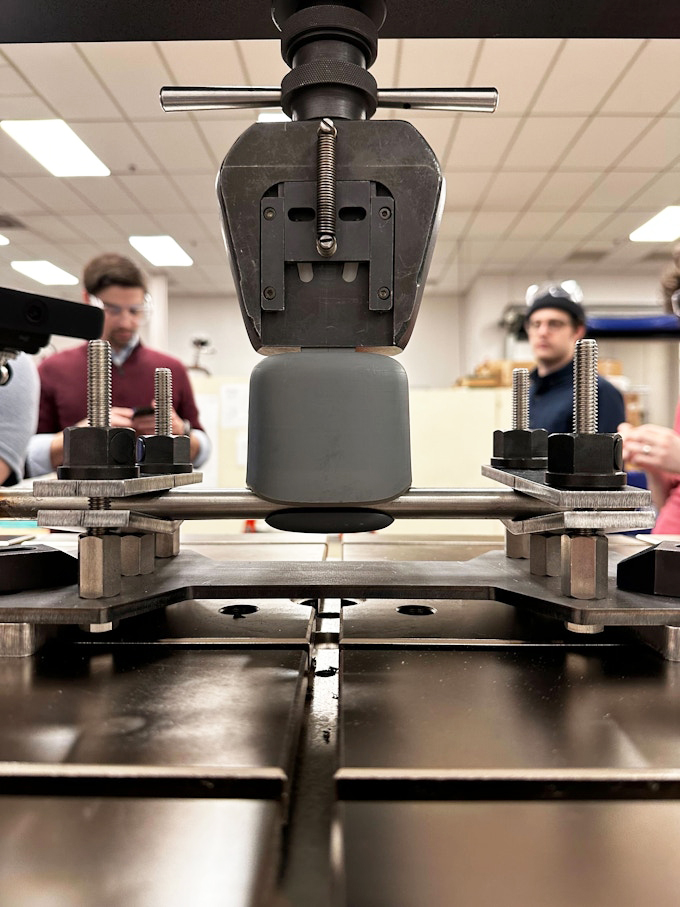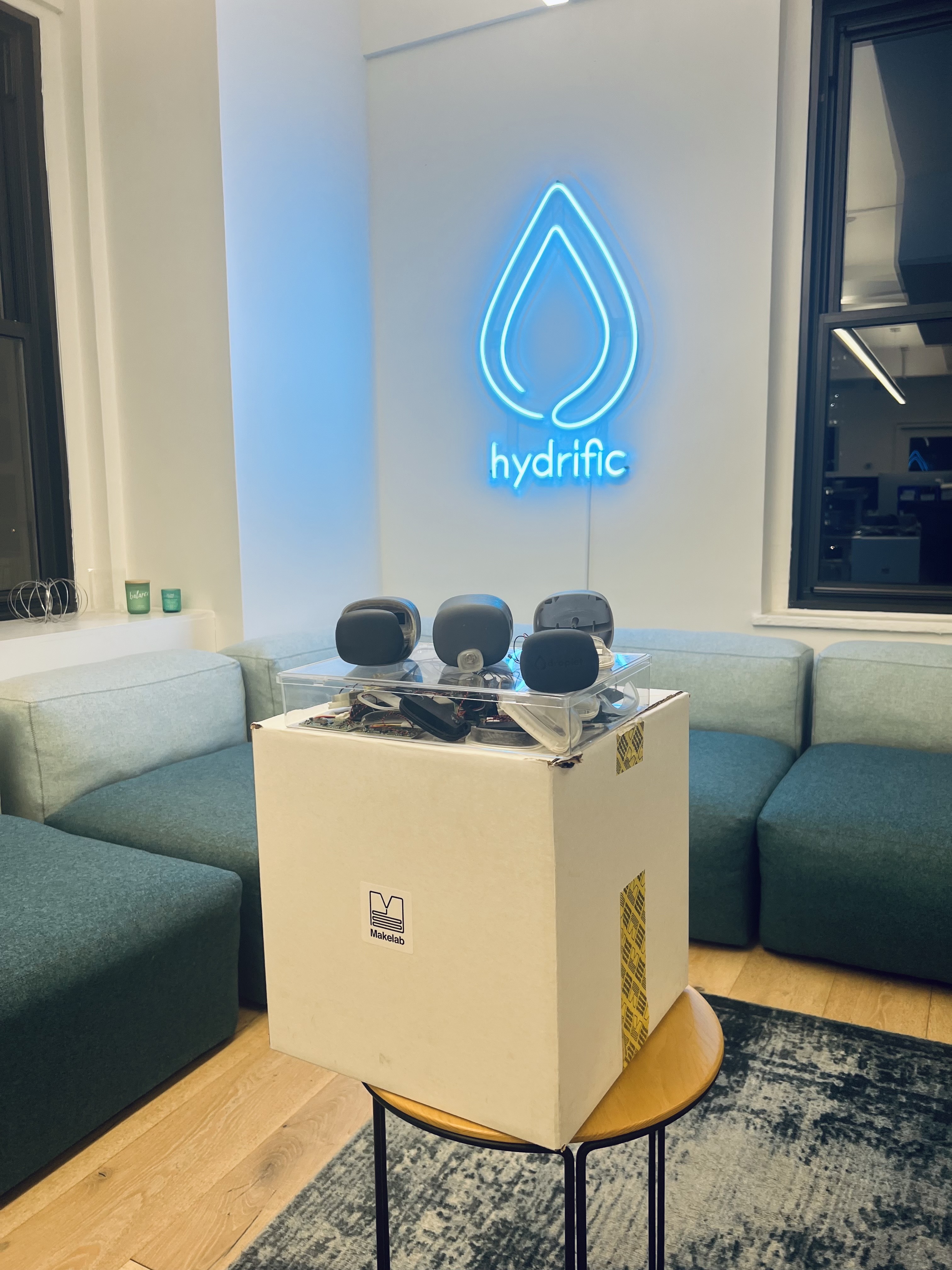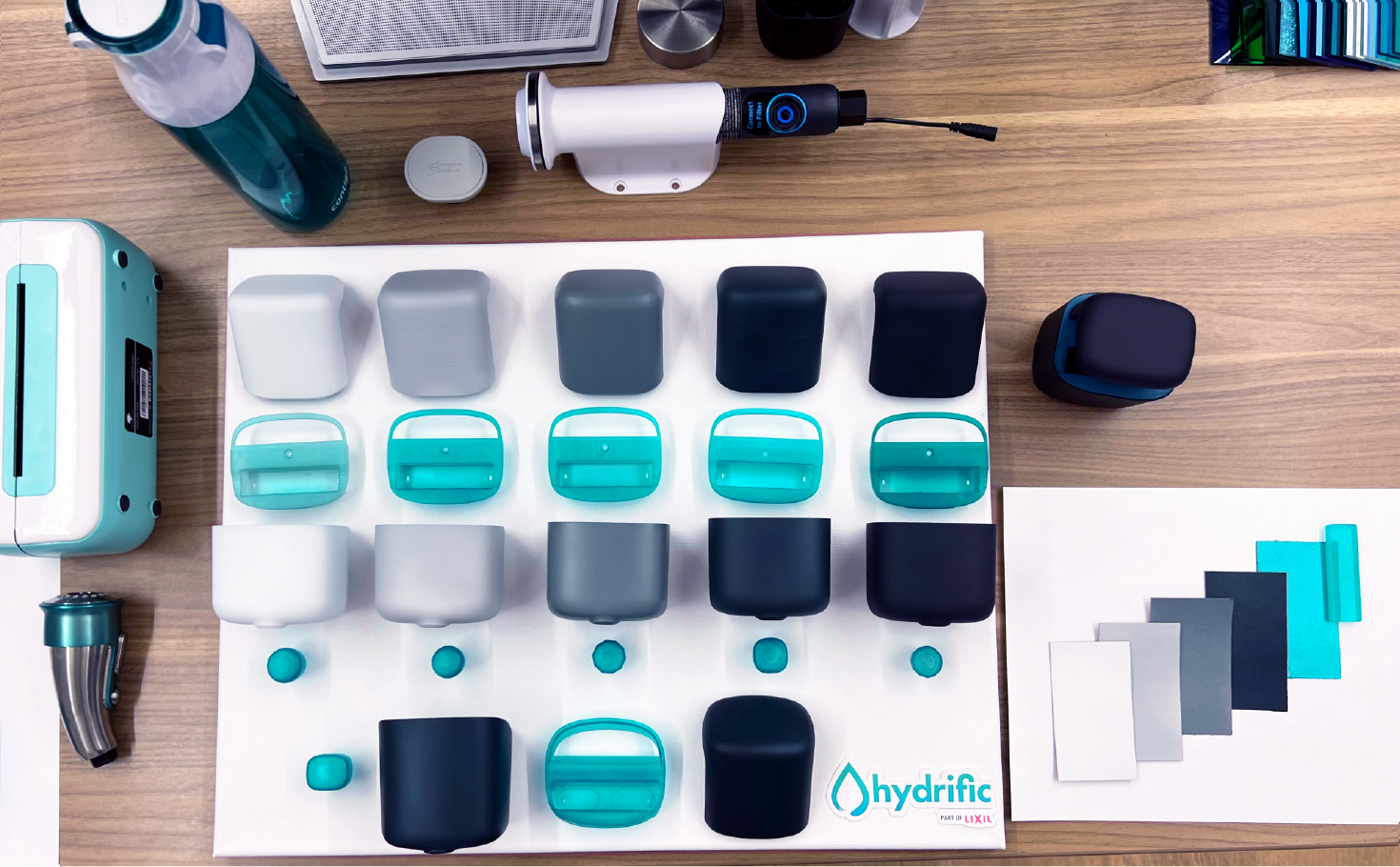

At Makelab, we're super excited about how fast 3D printing is progressing. It's mind-blowing to see all the different materials that we can use to make awesome stuff. And you know what's even cooler? There are always new materials coming out that let us do even more amazing things.
Being at the forefront of innovation is what we're all about at Makelab. We love trying out new materials and always staying curious and open-minded. But we don't just stop at providing top-notch 3D printing services. We also want to share what we know and teach you all about the incredible world of 3D printing materials.
We're here to help you out, give you the knowledge you need, and create a collaborative space. Alright, let's dive into the exciting world of 3D printing materials! There's a whole range of options out there, and we want you to be aware of them:
We're going to focus on two popular plastics in this article: PETG and ABS. These materials have their own unique properties that make them suitable for different applications. We'll compare them based on factors like ease of 3D printing, strength and durability, chemical resistance, cost, printing speed, post-processing, and environmental impact. Plus, we'll provide you with real-world examples of how these materials can be used.
If you're curious about other materials, our materials hub is packed with valuable information waiting for you to explore!
Finally, let's kick things off by introducing you to the materials we'll be discussing in more detail: PETG and ABS.
No doubt about it, PETG takes the cake when it comes to ease of printing compared to ABS. Let us break down why:
PETG is a breeze to work with, especially for beginners diving into the world of 3D printing. One of its advantages is that it doesn't require a heated bed. This makes it more accessible to novice enthusiasts who may not have a printer with that capability. Plus, PETG boasts excellent layer adhesion, resulting in finished products with a smooth surface that's free of those pesky visible layer lines.
Another perk of PETG is its low shrinkage. This feature significantly reduces the risk of warping during the printing process, ensuring your creations come out just as intended.
On the flip side, ABS presents some challenges in the printing department. It has a tendency to warp and shrink, which can cause headaches. To tackle this, ABS requires a heated bed to maintain a consistent temperature throughout the print, aiding in minimizing warping. Additionally, an enclosure is recommended to prevent heat loss and enhance the adhesion between layers, ensuring a successful print.
So, if you're looking for a material that offers a smoother printing experience, especially for beginners, PETG is the way to go. Its accessibility, excellent layer adhesion, and low shrinkage make it a reliable choice. However, if you're up for the challenge and have the necessary equipment like a heated bed and an enclosure, ABS can still deliver strong and durable prints, although with a bit more effort.
Strength and durability are key considerations when choosing a 3D printing material, and both PETG and ABS offer unique qualities in these aspects.
PETG truly shines with its exceptional impact resistance. In terms of strength, PETG has a stronger tensile strength in comparison to ABS. It offers impressive impact resistance, making it an excellent choice for objects that need to withstand high-stress situations without easily cracking or breaking. PETG's resilience and flexibility allow it to handle challenges effectively while maintaining its structural integrity.
Now, let's talk about ABS. This material excels in providing robustness and durability. With its higher compressive strength, ABS is well-suited for objects that require stability and the ability to withstand significant loads. It maintains its shape even under pressure, making it a reliable option for applications where strength and durability are crucial.
In terms of the chemical resistance properties of PETG and ABS, and how they can impact various applications, PETG takes the spotlight.
This remarkable material exhibits a superior ability to withstand a wide range of chemicals, making it a top choice for printing objects intended for outdoor use. Whether it's facing exposure to the elements or contact with different substances, PETG showcases its resilience. Notably, PETG is known for its higher resistance to UV light, offering added protection against the potentially damaging effects of sunlight. So, if you're working on projects that require excellent chemical resistance or extended outdoor use, PETG is your reliable ally.
In contrast, ABS has certain limitations in terms of chemical resistance. While ABS is a versatile material suitable for many applications, it is more susceptible to chemical degradation compared to PETG. This factor restricts its use in applications that require exposure to harsh chemicals. If your project involves objects that will come into contact with chemicals or corrosive substances, it's crucial to consider the specific limitations of ABS in those scenarios.
Generally speaking, PETG tends to be more expensive than ABS. The primary reason behind this price difference is that PETG is considered a specialty plastic that requires more advanced manufacturing processes. As a result, the production and processing costs associated with PETG are typically higher compared to ABS. Also, the cost of PETG can vary depending on the manufacturer and brand. Some PETG brands may be more expensive than others due to factors such as quality control, brand reputation, and additional features or certifications offered by the manufacturer.
ABS is a widely used plastic that is readily available in the market. Its popularity and wide adoption contribute to its relatively lower cost compared to PETG. ABS is considered a more cost-effective option for many applications due to its availability and the efficiency of its manufacturing processes.
In terms of printing speed, PETG tends to have a faster printing speed compared to ABS.
PETG is known for its zippiness when it comes to printing speed. Thanks to its lower printing temperature and faster cooling time, PETG prints can be produced at a quicker pace. The lower temperature allows for rapid layer solidification, enabling the printer to move swiftly and complete the print job in a shorter time. This can be a game-changer when time is of the essence in your 3D printing project.
You see, ABS’s printing process requires a higher temperature, which means the printer has to take its time to ensure each layer is properly formed. This slower speed allows for better cooling between layers, resulting in a more precise and well-crafted print. While it may take a bit longer, the trade-off is worth it considering the remarkable properties that ABS brings to the table.
To achieve the desired finish, both PETG and ABS require post-processing techniques.
PETG offers the advantage of easier post-processing. It can be sanded and polished to achieve a smooth and glossy finish. This allows you to refine the surface of your printed objects and enhance their overall appearance. Additionally, PETG can be painted with acrylic paints, providing the opportunity to add vibrant colors and intricate textures to your creations.
ABS on the contrary requires more extensive post-processing to achieve a smooth finish. While sanding and painting are viable options for ABS, it typically benefits from an additional step called chemical smoothing. Chemical smoothing involves using specific chemicals to dissolve the outer layer of the printed object, effectively reducing or eliminating the visible layer lines. This process results in a glossy and professional-looking finish for ABS prints.
PETG is considered to be a more environmentally friendly choice compared to ABS for several reasons. First, PETG is a recyclable plastic, which means it can be recycled and reused multiple times without significant degradation of its properties. This recyclability helps reduce waste and promotes a more sustainable approach to manufacturing and consumption.
Additionally, PETG is known to emit fewer fumes and odors during the printing process compared to ABS. While both materials may release some volatile organic compounds (VOCs) when heated, PETG generally produces lower emissions, making it a safer and cleaner option for indoor use.
In terms of recyclability, ABS can be more challenging to recycle compared to PETG. While ABS is technically recyclable, the recycling process can be more complex due to its composition and the need for specialized recycling facilities. This can make ABS less environmentally sustainable compared to PETG, which is often more readily accepted in recycling programs.
It's important to note that environmental considerations can vary depending on specific manufacturing processes, recycling infrastructure, and local regulations.
PETG is a material that finds its way into a wide range of everyday items. You'll often spot it in food containers, water bottles, and other products that demand both chemical resistance and impact resilience.
But that's not all! PETG also contributes to the automotive industry, playing a crucial role in the production of durable automotive parts. It even lends a helping hand in the medical field, where it's used to create reliable medical devices and prototypes.
Turning our attention to ABS, the unsung hero of countless industries. ABS is a go-to material for automotive enthusiasts, as it dominates the production of automotive parts like resilient bumpers and trusty dashboard components.
But ABS also doesn't stop there! It brings joy to millions of children and adults alike through its presence in the world-famous Lego bricks. Yes, those colorful building blocks are crafted from none other than ABS plastic. It also makes its mark in the creation of electronic enclosures, sturdy cases, and innovative prototypes.
In conclusion, choosing the perfect material for your 3D printing project requires careful consideration of the application and desired properties. At Makelab, we understand the importance of finding the ideal match. PETG and ABS are both famous in the world of 3D printing, each with its own spotlight-worthy features.
PETG takes the stage with its easy printing capabilities, making it an absolute favorite for both newbies and seasoned creators. Meanwhile, ABS struts its stuff with its rigid nature and impressive compressive strength. Widely available and budget-friendly, ABS steals the show when it comes to versatility. Each material has its shining moments, and understanding its unique qualities will guide you toward selecting the best material for your project.
Join us at Makelab, where we'll be an extension of your team, providing the expertise and support you need to achieve extraordinary results.
Christina Perla is the Co-Founder and CEO of Makelab, a 3D printing service in NYC that prints parts, and prototypes for designers & engineers who are building physical products. Recently she shared her expertise at NYU with an exclusive group of attendees. Now, we brought her lecture to you.
Christina’s background is in industrial design, and before 3D printing existed, she and other designers used blue foam insulation from Home Depot to prototype new products. It was messy and toxic, but it was the best option at the time. It was so common that there is even an Instagram account called @blueformdust.
When Christina and Manny started Makelab, they were printing just a handful of materials, but it was already overwhelming. The pace of innovation in the industry is insane. There's always a new material or technique being developed. The latest thing Christina heard of was a 3D-printed basketball that was completely hollow and bounced the same as traditionally manufactured basketballs. It's revolutionary.
Despite the constant innovation, many people are still adopting 3D printing into their workflows. It's fast, cost-effective in some use cases, and allows designers to prototype quickly and efficiently. There are a lot of materials available, which is great, but designers may not always know what they need until they see it.
3D printing is a revolutionary industry that's changing the way designers and engineers work together to develop new products. Let’s get into the following materials: PLA, Standard Resin, Grey Pro Resin, Durable Resin, and Flexible Resin.
PLA is one of the most commonly used materials in 3D printing. It is an affordable and fast option that can be used for a wide range of applications, particularly for early-stage prototyping. The material may not offer the highest quality, but it gets the job done efficiently and has its use cases for display models and early-stage prototyping.When it comes to designing a part like a water bottle or any other model with a basic shape, PLA is an excellent option for prototyping. It is also suitable for loosely fitting parts. Nevertheless, it is crucial to keep in mind that PLA prototypes do not have the same tolerances as injection-molded plastic pieces.
One of the benefits of PLA is that it is easy to work with. You can paint, sand, and coat it to give it the appearance of other materials. However, the way it is printed (print orientation) can impact the accuracy and dimensions of the finished product.FDM, also known as Fused Deposition Modeling, works by melting the material and re-extruding it to follow a specific path, similar to a hot glue gun. Yet, it is not possible to print in the air, which means supports are needed for certain geometries, also known as overhangs. It's also vital to note that anything the supports touch will have scarring, affecting the overall accuracy, dimensions, and visual look of the product.
When it comes to the design of PLA prototypes, the best advice is to keep things simple. Intricate designs may not translate accurately, but basic geometries, big blocky parts, and thick walls work well. As the size of the product increases, so does the volume of material used, making PLA an economical option.
PLA is an excellent material for proof-of-concept models and early-stage prototypes. Customers often use it before moving on to more expensive materials as they finalize their designs. Graduating from PLA saves money since mistakes can be costly, especially when using more expensive materials.
In conclusion, PLA is affordable, easy to work with, and can be used for a wide range of applications. However, it may not have the same tolerances as injection-molded plastic pieces and intricate designs may not translate accurately. Overall, PLA is a reliable and cost-effective option for anyone looking to 3D print basic shapes and parts.
Unlike traditional 3D printing materials like PLA, which are made from thermoplastics, Standard Resin is made from a completely different technology. This allows the material to achieve a much higher level of surface quality and detail, making it ideal for a wide range of applications. The main barrier is really cost. Print time can also be a barrier here.
One of the interesting uses of Standard Resin that we’ve seen at Makelab is for making mold positives. We’ve seen this be particularly useful for ceramicists, who often create handles and other objects that need to be slip-cast. To do this, the handle is placed into a box and plaster is poured around it to create a mold. The slip is then added and the mold is cast to make multiple copies.
Besides mold positives, Standard Resin is also a great choice for certain engineering applications that require a high level of surface quality and precise tolerances. For example, in aerodynamics, the surface of a component is critical to its performance, and resins excel in this regard, offering the level of detail and accuracy required for demanding engineering applications.
Another advantage of Standard Resin is its ability to achieve high levels of detail in small parts. This is due to the layer height of each step in the printing process, which can be 100, 50, or even 25 microns. Even so, Standard Resin isn't suitable for every use case, since it lacks the heat and chemical resistance of traditional plastics. Additionally, Standard Resin can be brittle, which makes it susceptible to cracking and shattering if dropped. Despite these limitations, resin remains a valuable tool in the 3D printing toolkit, particularly for prototyping and aesthetic applications.
So, if you need to create a high-quality mold positive, or if your project demands a level of surface quality and precision that other materials can't match, Standard Resin is your go-to material.
Resin 3D printing, also known as SLA (stereolithography), has revolutionized the world of prototyping and small-scale manufacturing. And within the resin printing realm, one material that has gained a lot of popularity is Grey Pro. It is a resin material that is specifically designed for printing small, intricate parts with fine details.
What makes Grey Pro stand out from other resins is its flexibility. While most resins can be brittle and prone to breakage, Grey Pro has just the right amount of flex to make it more durable, making it ideal for printing small parts that need to withstand bending or slight impacts without breaking.
But Gray Pro's flexibility is not the only advantage it has over other resins. It also provides a better surface finish, which means that the printed parts have a smoother and more refined surface. This is particularly important for small parts that require high levels of detail and accuracy.
At Makelab, we’ve seen Jewelry companies have found Grey Pro to be a particularly useful material for prototyping intricate parts, such as gold chains and small rings. However, it is important to note that while Grey Pro is a great material for engineering use cases and multi-part assemblies that require movement, it may not be the best choice for aesthetic parts. If you need to simulate pliability in a model, Grey Pro can work, but for painting or molding, it may not be the most cost-effective material.
When using Grey Pro for prototyping, it is still necessary to be mindful of supports. While the support nibs are easier to manage than those of other resins, they can still leave a little bit of scarring. Therefore, it is fundamental to orient the part properly and to provide instructions to the printer to ensure the surface is clean and accurate.
Overall, Grey Pro is a versatile and reliable resin material that can provide excellent results for small-scale printing needs. Its flexibility, durability, and surface finish making it a popular choice for jewelry makers and engineering companies alike.
One of the materials that have caught our attention quickly at Makelab is Durable Resin. It is a low-drama material that can simulate polypropylene. What is impressive about this material is its strength and flexibility. Unlike Grey Pro, it has more flex, and it can withstand a lot of pressure without breaking. If you print out a bottle prototype, you can squeeze it, and it will bounce back.
The smooth surface of this material makes it perfect for ball joints, snap-fit joints, or interlocking pieces that need to function for a long time. Its strength lies in longevity, making it useful for student projects or final projects where you need pliability and a smooth surface finish.
The accuracy of Durable Resin is top-notch, making it a favorite among printers. It is semi-translucent and very thin when in its liquid form, making it easier to print than, for example, black resin (which is difficult to print because it's so dark). The viscosity of this material is a big factor in the success or failure of resin printing.
We printed several sample parts using Durable Resin, and the results were impressive. Small parts are perfect for this material, making it an ideal choice when you need precision and pliability. The surface texture also comes out very well in this material.
Of course, no material serves all purposes and there are some limitations to using Durable Resin. We do not recommend using it for aesthetic purposes, anything super flat that can be laser-cut, or anything that connects with another piece and bears weight. In these cases, the cost and risk outweigh the benefits.
Overall, Durable Resin is an excellent choice when you need a material that can simulate polypropylene, withstand pressure, and last for a long time. Its accuracy, pliability, and smooth surface finish make it a favorite among printers.
3D printing with elastomers has become increasingly popular in the additive manufacturing world due to its ability to produce intricate details and soft-touch parts. We offer two types of elastomer materials in-house: Flexible Resin and Elastic Resin. While Flexible Resin has improved over the years, it still has some limitations that must be taken into account when using it for printing.
One of the main challenges with printing with Flexible Resin is that the material is difficult to support during the printing process. Depending on the shape and orientation of the piece being printed, support structures may be required, which can affect the tolerance and make it difficult to fit the part over other objects. These supports are also more difficult to remove, given the flexible surface. Additionally, the material can wear and tear over time due to continuous exposure to UV light, making it less durable than other printing materials.
Despite these limitations, 3D printing in Flexible Resin can still be a valuable tool for creating small, detailed parts with a soft touch. However, the material is not ideal for extra large parts or for anything that requires stiffness or strength.
As the material continues to improve, it's likely that we'll see more and more applications for Flexible Resin in the additive manufacturing world.
Interested in learning more about 3D printing materials? Visit our materials guide. And if you’re a Startup or a Student, we have special programs with discounts for you. Discover Makelab for Startups and Makelab for Students.
3D printing has revolutionized the way we create prototypes, products, and parts. It has made it possible for anyone to turn their ideas into physical objects without the need for expensive tooling or manufacturing equipment. However, when it comes to choosing the right materials for 3D printing, there are many options available, and it can be challenging to know which one to choose.
Here at Makelab we deliver 3D printing services to designers & engineers making physical products and answer these kinds of questions daily to guie you into making the right decision. More often than not, the material that comes to mind when thinking about 3D printing is plastic. And although polymers are the predominant material for 3D printing, there are other materials like metals and ceramics. Nevertheless, even when we narrow our options to polymers, there are still a few options to analyze.
In this blog post, we will compare two popular materials for 3D printing: PETG and PLA, by analyzing their ease of 3D printing, strength and durability, chemical resistance, cost, printing speed, post-processing, environmental impact, and real-world examples for each 3D printing material. Let’s start with a short introduction to PLA and PETG.
Both PLA and PETG are technically non-toxic, although long-term effects have not been studied and we do not recommend this material be used directly in food applications and prolonged skin contact.
Let’s talk about ease of printing. Both PLA and PETG are known for being easy to 3D print with when looking at the wide range of materials available.
But since PLA is a low-temperature filament, it makes it easier to use on a wider range of 3D printers, including those with lower-end heating elements. PETG, on the other hand, is a more challenging material to 3D print with than PLA because it requires higher temperatures.
Another point in favor of PLA is its lower tendency to warp than other materials, allowing you to print large objects with minimal distortion. PETG, on the contrary, is more prone to warping and cracking, which can lead to failed prints or parts that are not as strong as they need to be. The success of printing parts in this material is determined by the geometry of the part.
If you’re looking for a material that is strong, durable, and can withstand impact, we have a clear winner: PETG. Plus, it is also more resistant to temperature changes, and more flexible than PLA! Considering these properties, PETG is a great choice for outdoor applications, parts that will be exposed to high temperatures, and printing objects that need to bend or flex without breaking.
Beware that neither PETG nor PLA is known for being UV resistant. Though PETG is known for having a higher heat and UV resistance than PLA, meaning it can be exposed to the elements more than PLA before starting to break down.
Following the previous topic, another advantage of PETG is its chemical resistance. PETG is more resistant to chemicals than PLA, making it the go-to choice for printing objects that will be exposed to harsh chemicals or solvents. If you predict your part will be exposed to water or humidity, worry not, since PETG is also resistant to moisture.
Regarding cost, PLA is the cheaper option. Because PLA is widely available, it can be purchased in bulk for a low cost. PETG, on the contrary, is more expensive due to its higher manufacturing cost and more advanced properties.
Nevertheless, while PLA is cheaper than PETG, it may not always be the most cost-effective option (you know how the saying goes, sometimes cheap is expensive). This is because PLA is not as durable as PETG and may need to be replaced more frequently, which can increase the overall cost of using PLA.
Want to have an idea of how much a 3D-printed piece might cost? We got you - but please, be mindful that the cost of 3D printing an object can be influenced by several factors, including:
As a rule of thumb, the more complex, large, detailed, and accurate the print, the higher the costs. But each case is unique, and you can get a quote through our 3D printing quoting software.
Still, we want to be as transparent as possible, and make your 3D printing journey smooth and easy. Here are some examples, their characteristics, and their price before shipping:
.webp)
.webp)
.webp)
.webp)
.webp)
.webp)
.webp)
.webp)
In terms of printing speed, PLA is unequivocally the faster option. As previously mentioned, PLA prints at a lower temperature than PETG, meaning that it can be printed more quickly. While the printing speed for PETG is said to be kept at max at 60 mm/s, PLA can easily go up to 100 mm/s. This can be an advantage if you need to produce large quantities of prints in a short amount of time.
When it comes to post-processing, PLA and PETG have some notable differences. PLA is generally easier to post-process, as it can be sanded, painted, or glued easily due to its lower melting point. However, PLA can be brittle and prone to cracking, which can make it more difficult to work with in some situations.
Post-processing PETG can be more challenging. Due to its higher melting point, PETG may require more specialized tools or techniques.
An important remark is that PLA filament can be painted while PETG cannot. But PETG is known for being able to be transparent which has its own benefits in a number of applications.
Nowadays we can’t overlook the environmental factor, and it is something we care dearly for at Makelab. Luckily, both PLA and PETG are considered to be the most eco-friendly 3D printing materials. PLA can be composted, while PETG is recyclable and can be melted down and reused. However, it is important to note that both materials require energy to produce and recycle, and the disposal process for 3D-printed objects may vary depending on local regulations.
Sometimes the best way to decide what’s the best 3D printing material for your project is by analyzing real-world examples. We selected the most common applications for each 3D printing material.
In conclusion:
Ultimately, the choice between PETG and PLA will depend on the specific needs of your project and the properties required for the printed object. In any case, we are always available to help and guide you in the right direction. Feel free to reach out to us through our chat, this form, or if you feel comfortable already about what you’re looking for, to get a quote through our self-serve auto quote.
The amount of materials you can print is quite frankly, overwhelming. Each has a slightly different set of material properties that lend themselves to different and varied use cases. We're covering this on our #matchthematerials series.
So let's talk about SLA (Stereolithography) and resin. It's commonly referred to as "resin 3D printing" and is 3D printed using a laser that cures liquid resin into hardened plastic. Like other materials and technologies, this is done layer by layer. But because we're using lasers, the precision is much tighter and more accurate. The number of different resins you can 3D print in is endless. You have your run-of-the-mill Standard Resin, and then a whole collection of Engineering Resins.
This is the most commonly used, the lowest price point, and the most versatile of our resin collection here at Makelab. We've seen everything from cosmetic and display models for retail and events, prototypes for jewelry designers, molds for jewelry makers, molds for ceramicists, and prototypes and parts for industrial designers and engineers. With resin, you can get a level of detail that is difficult to achieve with FDM and PLA.
Besides being incredibly accurate, the surface is smooth. This is great for parts that need an additional step of finishing. Whether it's painting, metallizing, electroforming, or felting, this is the material for you. For anyone with a fabricator background, it sands quite easily and retains primer and paint very well.
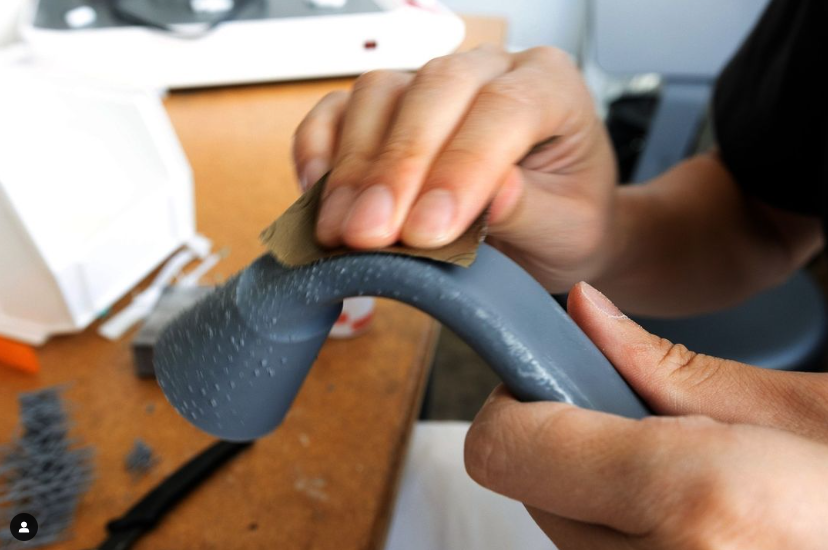
The cost of resin is higher than other materials we offer at Makelab. One reason for this is the raw material cost and the consumables needed to 3D print a build. Another reason is post-processing & support removal! SLA and Resin usually come out of the printer with a large amount of supports. It takes time for us to remove the supports and sand away the many nibs that are required for a successful 3D print. The time to print is also generally longer than FDM & PLA 3D prints.
Another downside is that it's not the most volume-order friendly. Because of the cost and post processing required, it's not the first material we'd suggest for QTY 200+.
It's messy! This isn't a problem for us, but if you're 3D printing SLA and Resin on your own, you will want to make sure you have proper safety equipment, IPA alcohol to clean any resin residue, and lots of gloves (you don't want prolonged skin contact!).
How many materials are offered! PP-like? No problem. ABS-like? No problem. Rubber or silicon-like? No problem. The unique properties of all these materials allow for more realistic prototyping and testing of parts before sending them to production. In short, because of 3D printing, users all over have access to these materials that allow for small testing and short runs.
And the AM industry is just engineering more and more materials with more and more capabilities.
For a list of all our engineering materials, visit our Materials Overview page.
If you're looking for hyper-longevity of parts, these resins may not be for you. Engineering resins function great as prototypes with a short lifespan and short testing period. These materials are UV sensitive and degrade over time, especially with exposure to UV lights (which is all around us!).
Price points are much higher than FDM materials and Standard Resin. This is mainly because of the raw cost of materials. BUT! The price points are still more cost effective than traditional prototyping.

Even with customers who have utilized 3D printing in the past, the same questions persist, but possibly with a history of not so smooth orders. Historical orders were late, printability issues were not communicated, it was difficult to get in touch with people, questions went unanswered. Maybe only <25% of the orders went south, but those are the ones that are remembered for future prints.
We get it. Our founders were industrial design consultants in a past life, used 3D printing for quick prototyping, and ran into all of these questions and issues. They even bought their own 3D printer to bring it in house, but only used it a few times until the first few failed prints.
So that’s why they built Makelab with a focus on the customer experience. Here’s what they did:
We have a team member check every single part that is printed on our systems. We know what can or cannot be done, how far we can push our machines, the limitations of our materials. So that’s why a human will always check for printability of parts. Never just a machine.
Sometimes, picking up an order and walking out with it is the best way to ensure that you have your part, when you need it, and how you need it. Plus, who doesn’t love to meet the faces behind the calls & emails, a sneak question or two for the next project, or a little lab walkthrough to show you how it’s done 🙂. That face time is invaluable for building business/vendor partnerships, and we get it.
But we also know that there are occasions where you need it fast, don’t have time to swing by, and shipping is too slow. That’s why we’ve partnered with Roadie to get your parts to you same-day, via courier.
Before any order goes out, we log it in our system. We have a team member (someone who was not working on your order) review it to make sure it’s up to quality standards. The worst feeling is to receive your part and it turns out you can’t use it. THE WORST! So that’s why we created this system of checks. And we photograph your part before it leaves our doors, so we can always reference back to it. (Don’t worry, that photo stays in our internal servers, for our eyes only).
When you’re in that iterative stage of product design, it’s easy to miss something. It’s human nature. So we built in a buffer that allows you to swap our your file 6 hours after you place an order, and 2 hours after we confirm it!
Have you ever experienced Domino’s pizza order process? How they notify you every step of the way? That’s what we’re aiming for at Makelab. We want to function like your internal team. So. We let you know what’s happening. When your part is about to get printed, when there’s an issue that delays the deadline, and when it leaves our facilities. But don’t worry, we’re building to add more features to make our process even more transparent.
Files designed in CAD aren’t always printable. And you don’t always have the time to modify your file. So that’s why we provide file modification services. For the busy designer or engineer on the run, too busy to go back into Solidworks or OnShape.
Scenario: A part is too large to print in one piece. We split it up, make it work, and re-assemble. You receive an oversized part, in the material you needed, and it works. Yes, it has a seam line, but that’s okay. It works. End scene.
We realized early on the importance of good service and someone to call if/when things don’t go as planned. That’s why we hired a dedicated Service Specialist available M-F during business hours to assist with any/all orders. They’re also trained to help with materials & negotiations on bulk orders 🙂
Yep, we still use phones. And when you call, if one team member does not pick up, your call is directed to another. Unless we’re at an all team meeting or at lunch, phones are picked up. That’s a fact.


"And it worked. It was the exact shape we needed. Faster and cheaper than soft tooling, watertight, and we were able to quickly integrate it into our prototypes for field testing."
"It's game-changing to have something this thin, flexible, and functional. I didn't know this was possible. I can imagine the incredible potential of this new material for testing asymmetrical and complex seal designs for various applications.”
“this technology can extend beyond seals and gaskets to applications like flexible hinges, over-molded parts, and even wearables"

Makelab is the exclusive on-demand 3D printing partner for Inkbit VCJ technology and materials like soft elastic and tough epoxy.
Learn more about VCJ.
